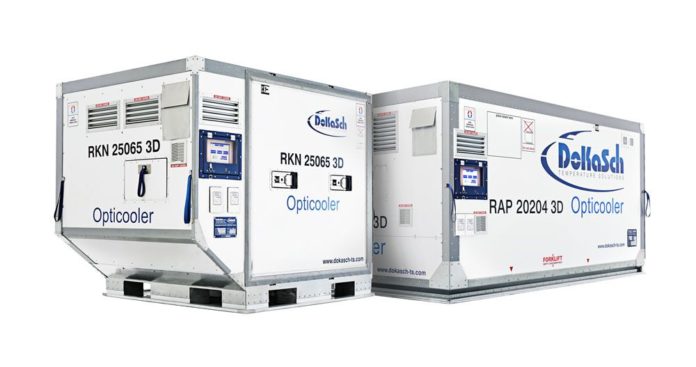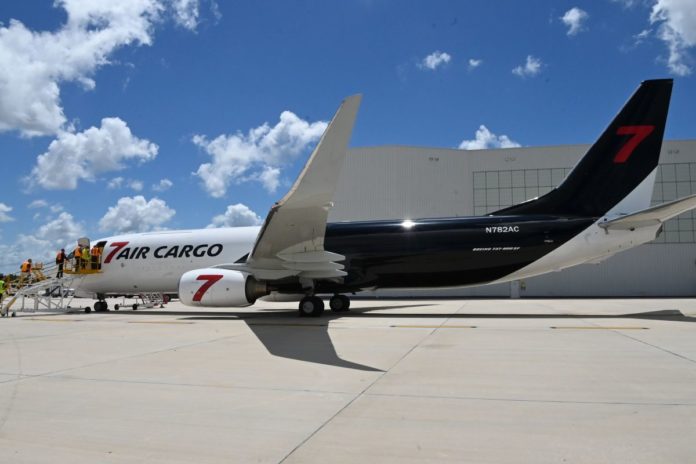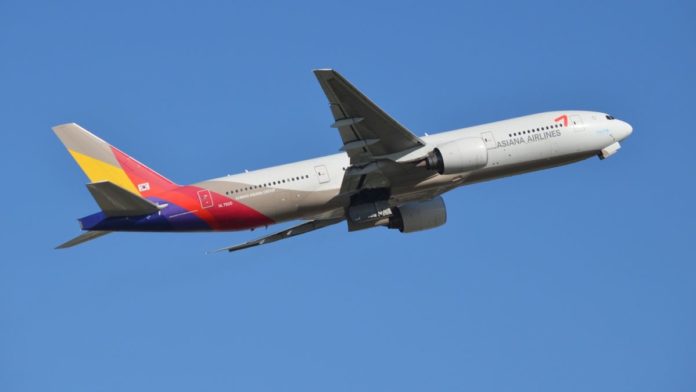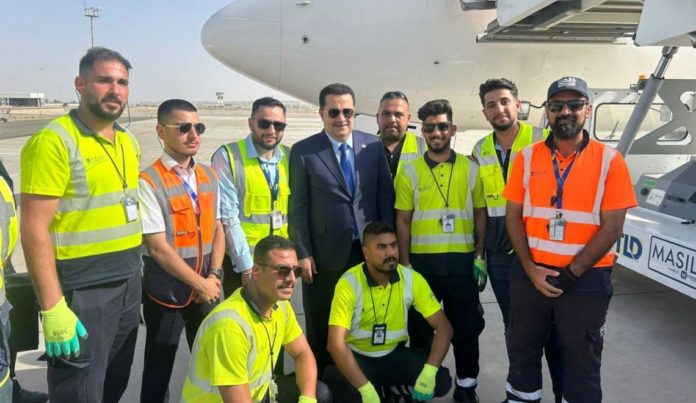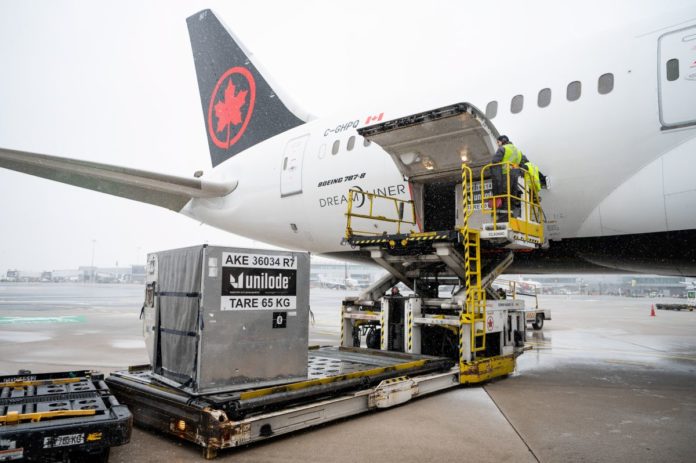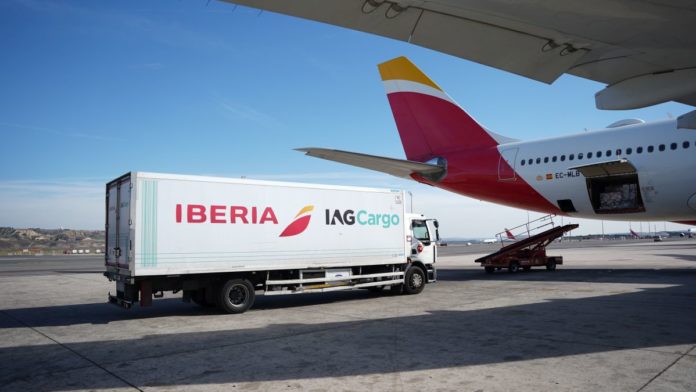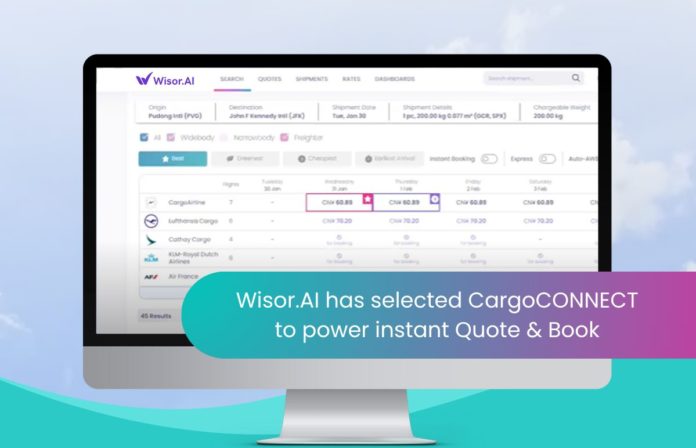DoKaSch Temperature Solutions has opened a service station in Atlanta, Georgia. Operated in collaboration with SEKO Logistics, it is located near Hartsfield–Jackson Atlanta International Airport and close to key life science clusters in the Southeast, including Raleigh–Durham. The station will ensure high availability of Opticoolers controlled temperature containers at short notice.
7Air is 3 million kilos up at MIA
Cargo airline 7Air officially launched services from Miami International Airport with a ribbon-cutting ceremony and tour of its B737-800SF aircraft for industry leaders on August 11.
The carrier has three of the aircraft currently in operation and a fourth is scheduled to join its fleet by the end of 2025. it flies 20 weekly all-cargo flights between MIA and Managua, Nicaragua, Santo Domingo, Dominican Republic, and San Juan, Puerto Rico and has also operated charter flights to Lima, Peru, and Kingston, Jamaica. Since its first flight from MIA in April, 7Air has already carried three million kilograms (3,307 tons) of cargo.
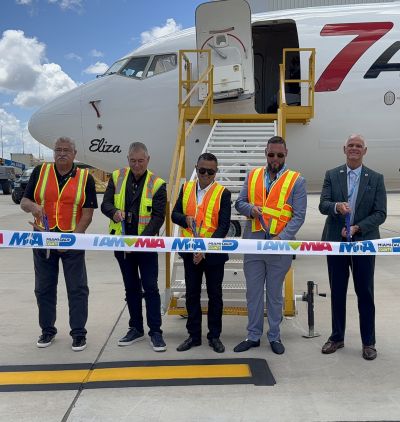
ECS Group signs Asiana GSSA deal
General sales and service agent (GSSA) ECS Group is to be Asiana Airlines’ exclusive global cargo partner. ECS will provide sales, reservations, customer service, and ground handling coordination—at 33 locations in nine countries in Europe, the Americas, China, Japan, and Southeast Asia.
Following the divestment of its freighter division, Asiana has transitioned to a fully belly cargo-based model, utilizing the lower holds of its passenger aircraft—including the A350-900, which offers up to 18 tons of cargo capacity, focusing on high-demand, time-critical shipments such as semiconductor components, fresh food, and small express cargo. In 2024, it carried some 158,000 tons of belly cargo on international passenger flights.
Menzies to run handling at Iraq’s Mosul International
Menzies Aviation is to deliver ground, air cargo and fuelling services at Mosul International Airport in Iraq through its MASIL joint venture with Iraqi Airways, Air BP and Al-Burhan Group.
One fully operational, MASIL will provide a full suite of aviation services at OSM, under a new 10-year license, further strengthening its footprint in the region, building on its MASIL’s operations at Baghdad International Airport.
Mosul International Airport has undergone extensive reconstruction and is expected to be fully operational within the coming months for domestic and international flights.
Andy Cornwell to lead American EMEA sales
American Airlines Cargo has promoted Andy Cornwell head of cargo sales for Europe, Middle East and Africa. In a 35-year career with the carrier, he has held various positions in sales and business development. He will continue to be based at London Heathrow from where he will report to global head of sales, Indy Bolina.
Air Canada flights restart
Air Canada is gradually restarting its operations after agreeing to mediation with 10,000 flight attendants, members of the Canadian Union of Public Employees. Discussions were begun on the basis that the union commit to have the airline’s 10,000 flight attendants immediately return to work, after Air Canada and Air Canada Rouge flights were grounded on August 16.
The first flights are scheduled for the evening of August 19, but return to full, regular service may require seven-to-ten days as aircraft and crew are out of position. Some flights will be cancelled over the next seven to ten days until the schedule is stabilized.
Leman offers sea-option between US and Europe for furniture firms
Danish forwarder Leman is offering a direct connection between the US and its Northern Europe logistics hub in Taulov, Denmark, aimed at lifestyle products such as furniture, and interior furnishing and other goods requiring special handling. It combines dedicated ocean freight capacity with air freight.
Located in the heart of Denmark’s Triangle Region, Taulov offers direct connections to Northern and Central Europe. The hub features temperature-controlled storage, and handling procedures tailored to high-value products, supported by digital tracking, customs clearance, and value-added services.
Leman operates around 40 offices across Europe, North America, and Asia, providing global transport solutions within road, sea, and air freight, as well as warehousing, customs clearance, and tailored logistics services for key industries including Pharma, Retail, and Lifestyle.
IAG Cargo keeps asparagus coming
IAG Cargo has reported a 21% year-on-year increase in perishable volume in the first half of 2025, particularly from Peru due to a shift in European consumer behavior.
In March alone, year on year asparagus exports from the country surged by 105%, with Spain among the top destinations during the off-season in Europe.
IAG Cargo says that the expansion of its perishables handling facility in Madrid in April 2024 has created a key hub for efficiently managing fresh produce.
Regional commercial Americas at IAG Cargo, Rodrigo Casal, said: “By keeping fresh goods moving, we’re also connecting producers with new markets, strengthening local economies, sustaining livelihoods, and creating opportunities across the supply chain.”
General manager of Lima-based exporter Peak Quality, Carlos Aparcana, added: “Lima-Madrid route is essential for our supply chain, connecting us directly with our key markets in Europe. During our high season from September to December, we handle up to 30 tonnes of asparagus a day. Working with IAG Cargo gives us the reliability we need to meet global demand and tight deadlines.”
Online insurer breezes into US market
The Breeze cargo insurance platform has entered the US market with a collaboration with Great American Insurance Group
Great American, an A+ (Superior) rated provider, will expand Breeze’s capacity to integrate fully with freight forwarders’ workflows, offering instant quotes and coverage
Breeze chief executive Eyal Goldberg said: “Partnering with Great American gives us the scale and strength to deliver on that promise across the US. With Great American’s backing, Breeze can now offer seamless, fully embedded cover, backed by one of the strongest underwriters in the market.”
Wisor integrates Quote & Book
Tel Aviv-based freight automation platform Wisor.AI has integrated CargoAi’s Quote & Book API from its CargoCONNECT suite. It enables Wisor users to access live airline pricing and booking capabilities directly from within its intelligent freight management platform.
It gives real-time access to over 105 airlines, 680 schedules, and 2.5 million dynamic rates with instant booking capabilities, eliminating manual quote requests.






